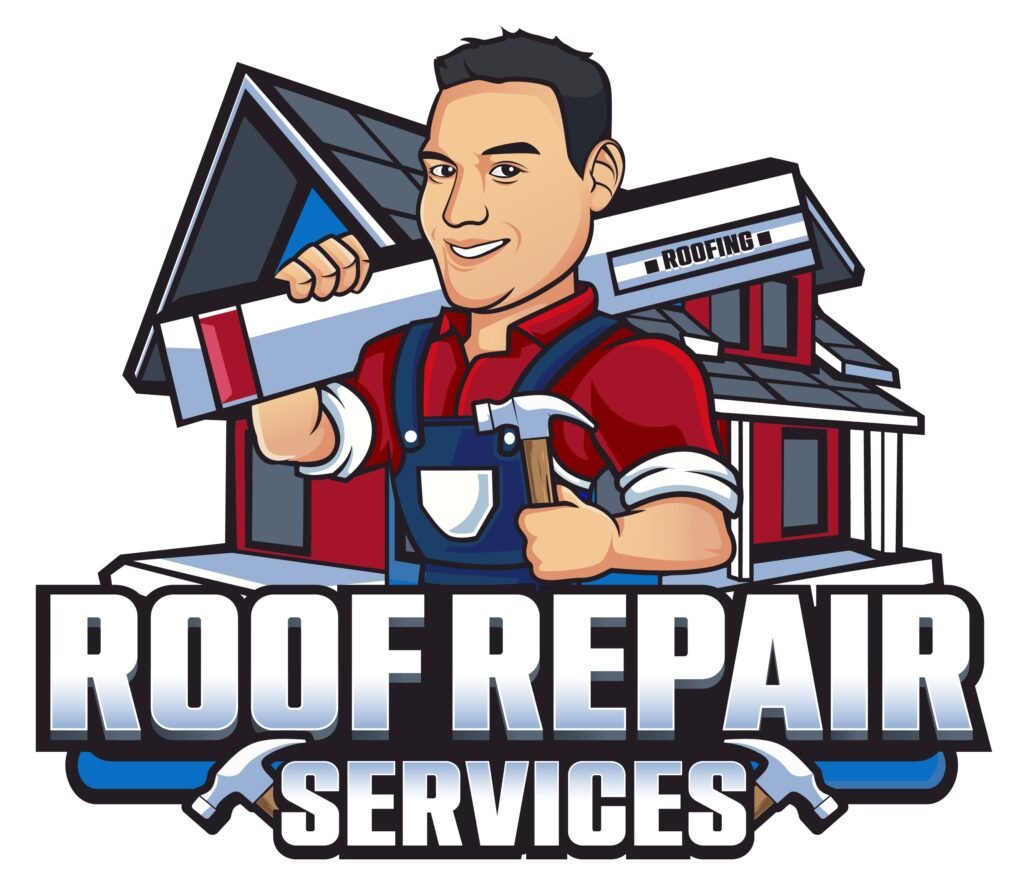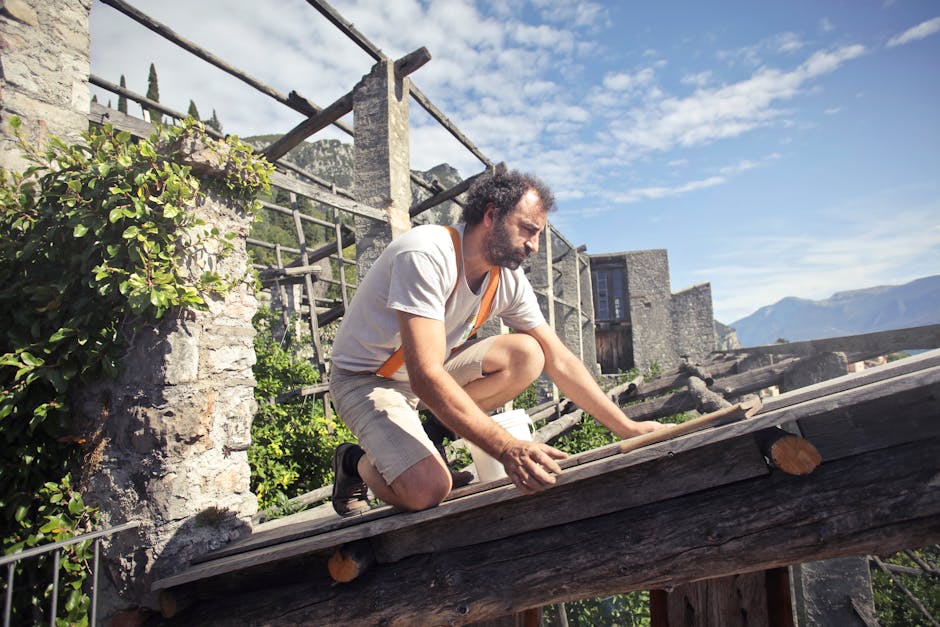Introduction to Wind Damage on Roofs
Wind damage to roofs is more common than most people think. It does not take a hurricane to cause damage; sometimes, even moderate wind speeds can lift shingles, creating gaps for water to seep in. When assessing your roof, look for missing shingles, curling or lifting at the edges, or even granules from the shingles collecting in your gutters. These are tell-tale signs of wind damage. To fix wind damage, you might need to replace missing shingles, reattach loose ones, or in severe cases, consider a full roof replacement. Regular inspections after strong wind events can save you a lot of trouble down the line by catching damage early. Remember, a little vigilance goes a long way in keeping your roof in top shape against the wind’s whims.
Common Signs of Wind Damage Roof
Wind doesn’t have to reach tornado strength to mess up your roof. Sometimes, even a strong breeze can cause damage you shouldn’t ignore. Here’s how you spot trouble: First, missing shingles are a dead giveaway. Wind can rip them right off your roof, leaving gaps. Next, look for curled or lifted shingles. They might not be gone, but they’re compromised. Also, check for granule loss. If your shingles are shedding their protective coating, you’ll see granules in your gutters or downspouts. This means the wind is starting to wear them down. Lastly, keep an eye out for damage to the roof’s edges. Wind loves to start there and work its way in. If you spot any of these signs, it’s time to call in a pro. Waiting around only leads to bigger problems, like leaks or structural damage. Remember, seeing the damage early can save you a lot of headache and money.
How Wind Speeds Affect Your Roof
Wind doesn’t mess around when it comes to your roof. Think of wind as that uninvited guest at a party who just doesn’t know when to leave and ends up breaking something. The faster the wind, the more pressure it puts on your roof. When wind speeds hit around 45 to 50 miles per hour, that’s when you might start seeing some damage. Loose shingles? Wind’s been here. Missing tiles? Classic wind move. But here’s the deal, it’s not just about the speed. The direction matters too. If wind hits at just the right angle, it can lift shingles, creating a perfect pathway for water to get in next time it rains. And once water gets under there, it’s game over for keeping things dry inside. So, next time the wind picks up, remember, it’s more than just a noisy bother. It’s a roof’s natural enemy, sneakily trying to wear it down or find that one weak spot to wreak havoc.
Initial Steps to Assess Wind Damage on Your Roof
Before you call in the pros, you can do a quick check to see if your roof got hit hard by the wind. First off, start from the ground. Look up at your roof and see if you can spot any missing shingles or tiles that look out of place. Also, check for shingles that might have curled up at the edges. If you’ve got binoculars, now’s a good time to use them. They let you zoom in on details without climbing up there. If you see any damage from the ground, jot it down. Next, if it’s safe, grab a ladder for a closer look. Make sure you tell someone you’re going up just to be safe. Look for loose materials or wear around the chimney, vents, and pipes. Sometimes, you can even find bits of shingles in your gutters or downspouts. That’s a dead giveaway wind’s been at your roof. Spotting these signs early can save you a ton of hassle later. Remember, it’s about getting a read on things. If you’re unsure or the damage seems serious, it’s time to call a professional. They can give you the full scoop on what needs fixing.
DIY Wind Damage Roof Inspection Tips
Checking your roof after a big windstorm is crucial to keeping your house in good shape. Here’s how you can do a basic check yourself, without needing fancy tools. Start by looking at your roof from the ground. Use binoculars if you’ve got them to get a closer look. You’re searching for missing or damaged shingles. These are your first red flags. Next, safely get up on a ladder to see the edges of your roof and gutters. Be super careful, safety first. Look for shingles that might be lifting up or any wear around the chimney and vents. If you can safely access your attic, check for signs of water damage or leaks, especially at the roof’s peaks and valleys. These spots often take the biggest hit during windstorms. Finding damage early can save you big bucks and a lot of stress down the line. Remember, if you’re unsure or the damage looks serious, calling in a professional is always the smart move. They know what they’re doing and can keep a small problem from becoming a big headache.
Professional Wind Damage Roof Assessment
When wind howls and storms hit, your roof can take a real beating. You might see missing shingles or more subtle signs of damage. Here’s where calling in a pro can make a huge difference. A professional roof inspector knows exactly what to look for, way beyond what you can see from the ground or with a quick ladder check. They’ll spot trouble like cracked or lifted shingles, damaged flashing, or problems with your gutters. Plus, they can assess the not-so-obvious signs of wind damage that could lead to bigger issues down the line.
Expect the inspector to take a detailed look, possibly even using drone technology to get a bird’s eye view of the damage. They’ll give you a report, often with photos, that tells you exactly what needs fixing. This isn’t just about patching up; it’s about making sure your roof is solid and secure against whatever weather comes next. Remember, catching and fixing wind damage early can save you from heftier repair bills or even a full roof replacement later on. So, if your area has been hit by severe winds, getting that professional assessment is a smart move.
Repairing Your Roof After Wind Damage
After a strong wind, your roof might need some care. First off, check your roof for damage. Do this from the ground to stay safe. Look for missing or damaged shingles. If shingles are curled or lifted, wind has probably gotten under them. Now, let’s talk about fixing it. Small repairs, like a few missing shingles, can be a DIY job if you’re handy. For this, you’ll need matching shingles, roofing nails, and roofing cement. Remember, matching the shingles is key to avoid a patchwork roof.
For bigger damage or if you’re not comfortable doing it yourself, call a pro. A professional roofer can assess the damage more thoroughly. They’ll check not just the shingles but also the roof deck and support structure. If the damage is severe, you might need more than a simple repair; a partial or full roof replacement could be necessary.
Your homeowner’s insurance might cover wind damage, so check your policy. Before filing a claim, document the damage. Take photos from different angles. Some insurers also require a professional estimate, so keep that in mind. In short, after wind damage, assess safely, match your materials for small repairs, or call a pro for bigger issues. And don’t forget to check in with your insurance.
Preventative Measures to Protect Your Roof from Wind Damage
To shield your roof from wind damage, start simple. Trim trees near your home. Loose branches can become missiles in high winds. Next, routinely check your roof for loose, damaged, or missing shingles and replace them promptly. Securing loose shingles prevents a chain reaction where wind lifts and rips off neighboring shingles. Consider installing wind-resistant shingles if you live in a high-wind area. These are designed to withstand greater wind speeds. Ensure your roofing contractor uses proper nailing techniques since nails improperly placed or spaced can lead to shingles blowing off. Also, check and reinforce the roof decking and underlayment. This layer beneath your shingles can add another defense against water infiltration if shingles are torn away. Regularly clean gutters and downspouts. Clogged gutters can lead to water backing up and getting under your shingles or siding, making them more susceptible to wind damage. Finally, have a professional roof inspection at least once a year. A roofing expert can spot potential problems you might miss and suggest fixes before they turn into expensive repairs. Taking these steps can significantly lower the risk of wind damage to your roof.
When to Consider Roof Replacement
Knowing when to replace your roof is crucial after wind damage. If you see shingles that are missing, cracked, or lifting at the edges, your roof is telling you it’s time. Also, if your roof is over 20 years old and has faced multiple storms, consider a replacement. Leaks inside your home are a red flag too. Don’t wait for a small leak to become a disaster. When seeing daylight through the roof boards from inside your attic, it’s a sure sign your roof can’t protect your home anymore. Lastly, if shingles are losing granules, found in your gutters, your roof’s age is showing, and it’s less effective against future weather hits. Ignoring these signs can lead to bigger, costlier problems. When in doubt, always consult with a professional roofing contractor to assess the damage and recommend if it’s repair time or if a full replacement is the smarter move.
Summary and Final Thoughts on Wind Damage Roof Repair and Prevention
When it comes to tackling wind damage on your roof, remember that prevention and early intervention are your best allies. Regularly inspecting your roof for signs of wear and addressing those issues immediately can save you from more significant repairs down the line. If you find damage, weigh the pros and cons of DIY fixes versus hiring a professional. For minor damage, a DIY approach could work, but for extensive harm, professionals have the tools and know-how to restore your roof correctly.
Don’t underestimate the power of maintenance. Clean gutters and downspouts can prevent water buildup, and trimming trees near your home can reduce the risk of branches falling on your roof during a storm. If you live in a high-wind area, consider investing in wind-resistant roofing materials. While the upfront cost may be higher, the long-term savings and peace of mind can be worth it.
In summary, addressing wind damage is about being proactive, knowing when to call in the experts, and making choices that fortify your home against future storms. Regular maintenance, coupled with timely repairs, can extend your roof’s lifespan and ensure it continues to protect your home.

